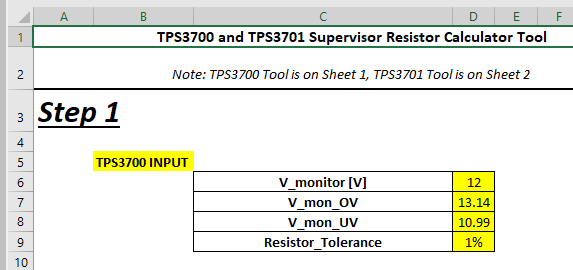The data sheet says "Select a value for RT such that the current through the divider is approximately 100 times higher than the input current at the INA+ and INB– terminals." My question is at what voltage? The example in Section 8.2 in the data sheet and in the Excel calculator are apparently using 5.73V. Or if it is 12V, then it is using 209.288 times the 25nA input current. These are not intuitive values, implying that I am missing something. This could easily be a calculated field in the Excel sheet based on the VMON entry. The fact that it is not also implies something more is going on. I would appreciate some clarification.
-
Ask a related question
What is a related question?A related question is a question created from another question. When the related question is created, it will be automatically linked to the original question.



